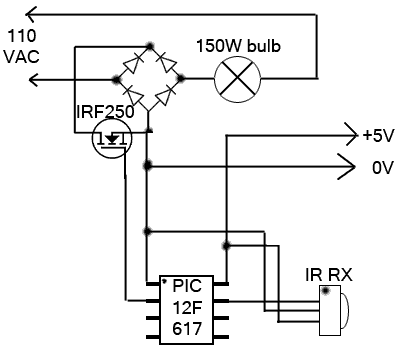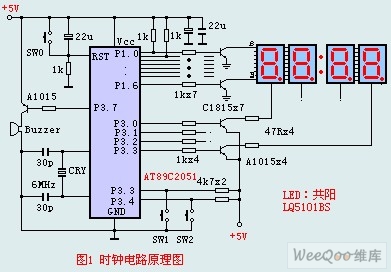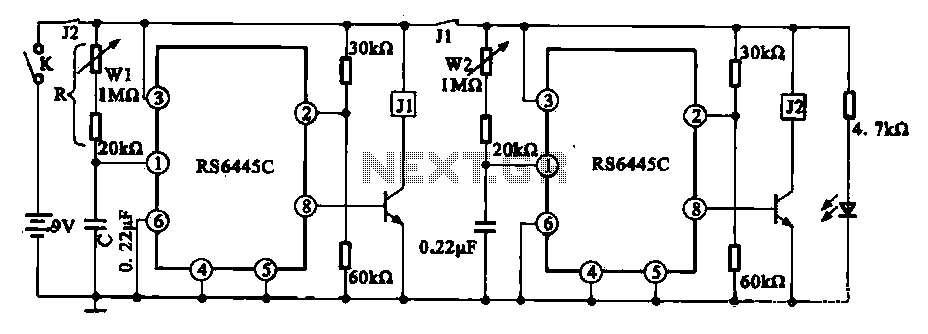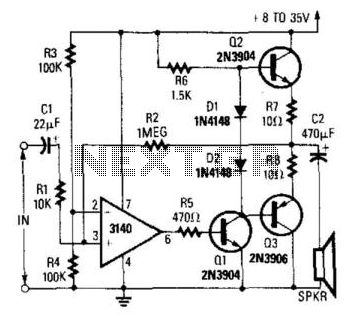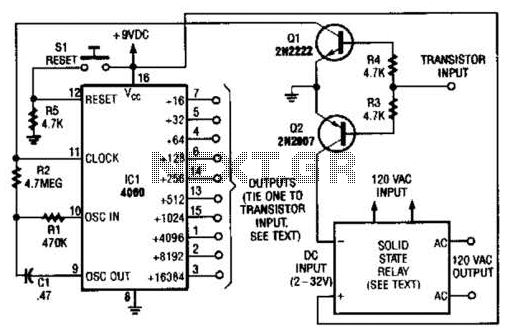
RF amplifier circuit 1W 2.3GHz MRF2001
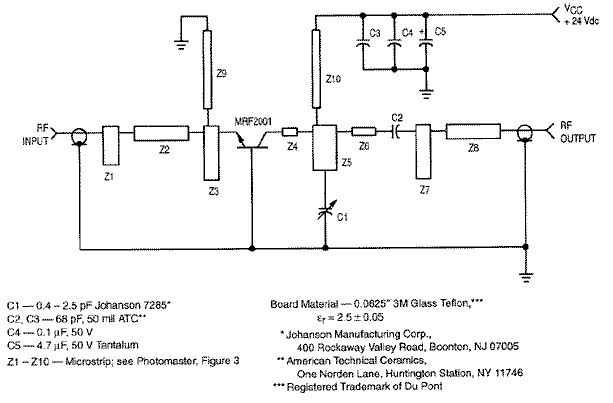
RF amplifier circuit diagram, delivering 1W for 2.3GHz, built based on MRF2001. This RF amplifier provides approximately 1 Watt power output with a minimum gain of 8 dB at a 24V voltage supply. The frequency can be tuned from 2.25GHz to 2.35GHz. Applications include microwave communications equipment and other systems that require medium-power narrow-band amplification.
The RF amplifier circuit utilizing the MRF2001 transistor is designed to operate efficiently in the frequency range of 2.25GHz to 2.35GHz, making it suitable for various microwave communication applications. The MRF2001 is a high-performance RF power transistor that can deliver a power output of approximately 1 Watt, which is essential for achieving sufficient signal strength in communication systems.
The circuit is powered by a 24V supply voltage, which is critical for maintaining the performance characteristics of the amplifier. The minimum gain of 8 dB ensures that the input signal is amplified significantly, enhancing the overall system performance. The ability to tune the frequency within a narrow band allows for flexibility in different applications, enabling the circuit to adapt to specific communication requirements.
In practical applications, this amplifier can be integrated into microwave transmitters or receivers, where medium-power amplification is necessary. Its design may include additional components such as matching networks and biasing circuits to optimize performance and ensure stability across the specified frequency range. Proper thermal management should also be considered to prevent overheating during prolonged operation, which could affect the reliability and longevity of the amplifier.
Overall, the MRF2001-based RF amplifier circuit is a robust solution for medium-power amplification in microwave communication systems, providing essential features such as tunability, adequate gain, and power output to meet the demands of modern RF applications.RF amplifier circuit diagram, deliver 1W for 2. 3GHz, built based MRF2001. This RF amplifier delivers about 1 Watt power output with 8-dB minimum gain at 24V voltage supply. The frequency can be tuned from 2. 25GHz to 2. 35GHz. Applications include microwave communications equipment and other systems that require medium-power narrow-band amplificatio n. 🔗 External reference
The RF amplifier circuit utilizing the MRF2001 transistor is designed to operate efficiently in the frequency range of 2.25GHz to 2.35GHz, making it suitable for various microwave communication applications. The MRF2001 is a high-performance RF power transistor that can deliver a power output of approximately 1 Watt, which is essential for achieving sufficient signal strength in communication systems.
The circuit is powered by a 24V supply voltage, which is critical for maintaining the performance characteristics of the amplifier. The minimum gain of 8 dB ensures that the input signal is amplified significantly, enhancing the overall system performance. The ability to tune the frequency within a narrow band allows for flexibility in different applications, enabling the circuit to adapt to specific communication requirements.
In practical applications, this amplifier can be integrated into microwave transmitters or receivers, where medium-power amplification is necessary. Its design may include additional components such as matching networks and biasing circuits to optimize performance and ensure stability across the specified frequency range. Proper thermal management should also be considered to prevent overheating during prolonged operation, which could affect the reliability and longevity of the amplifier.
Overall, the MRF2001-based RF amplifier circuit is a robust solution for medium-power amplification in microwave communication systems, providing essential features such as tunability, adequate gain, and power output to meet the demands of modern RF applications.RF amplifier circuit diagram, deliver 1W for 2. 3GHz, built based MRF2001. This RF amplifier delivers about 1 Watt power output with 8-dB minimum gain at 24V voltage supply. The frequency can be tuned from 2. 25GHz to 2. 35GHz. Applications include microwave communications equipment and other systems that require medium-power narrow-band amplificatio n. 🔗 External reference
